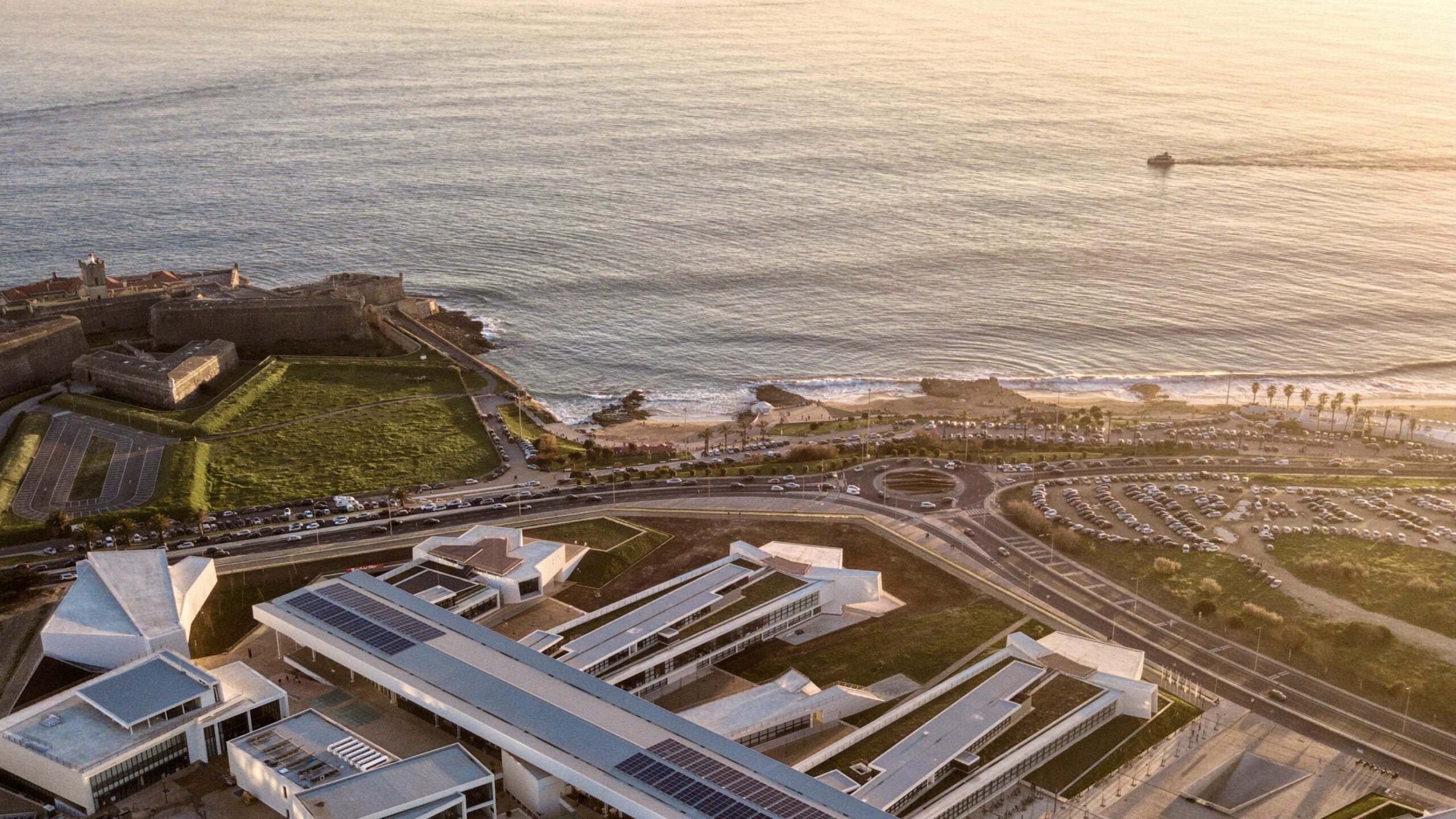
NOVA School of Business and Economics is situated in Carcavelos, a trendy beachside town and surfing hotspot on the Lisbon Riviera, halfway between downtown Lisbon and the twin towns of Cascais/Estoril.
More information: https://www.vegadmc-portugal.com/destinations/lisbon-coast-portuguese-riviera/34/
If you are considering extending your stay beyond the conference dates, this page offers a variety of suggestions to enrich your experience. Explore the historic wonders of Lisbon’s São Jorge Castle and the quaint streets of Alfama, or take a scenic ride on Tram 28. For those drawn to the allure of the sea, the coastal charms of Cascais provide a serene getaway. Alternatively, the lush landscapes and architectural marvels of Sintra await those seeking tranquility and beauty. Lastly, don’t miss the cultural treasures of Belém, where history, art, and culinary converge.
Visit Lisbon
Tram 28
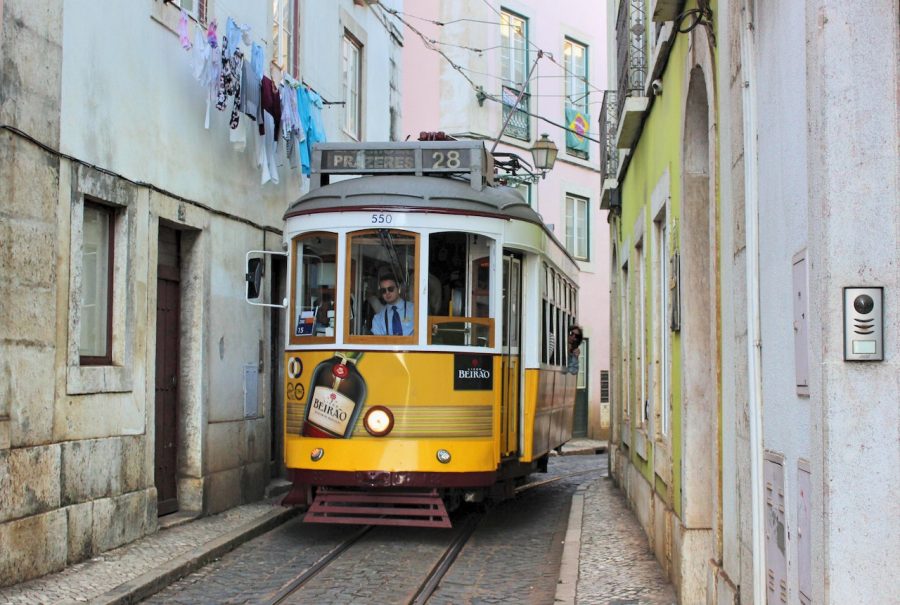
Taking a ride on the iconic Tram 28 is an absolute must. This historic yellow tram not only offers a practical means of navigating the city’s steep hills and narrow lanes, but it also provides a unique way to see some of Lisbon’s most picturesque neighborhoods.
Tram 28 winds its way through several of Lisbon’s most famous districts. The route starts in Graça, then meanders through Alfama, Baixa, and Estrela before ending in Campo de Ourique. You can hop on the tram at any of its stops, but for the full experience, it’s worth starting at either end of the route. Notable stops include the São Jorge Castle, the Sé Cathedral, and the bustling Praça do Comércio.
Tickets can be purchased on board from the tram driver, but it’s often more convenient to buy a 24-hour public transport pass from any metro station. This pass is valid for unlimited trips on trams, buses, and metro within the city.
Keep your camera ready — the ride offers plenty of perfect photo opportunities. Also, be mindful of your belongings, as the tram’s popularity with tourists can attract pickpockets.
Visit the Castle of São Jorge and the neighborhood of Alfama
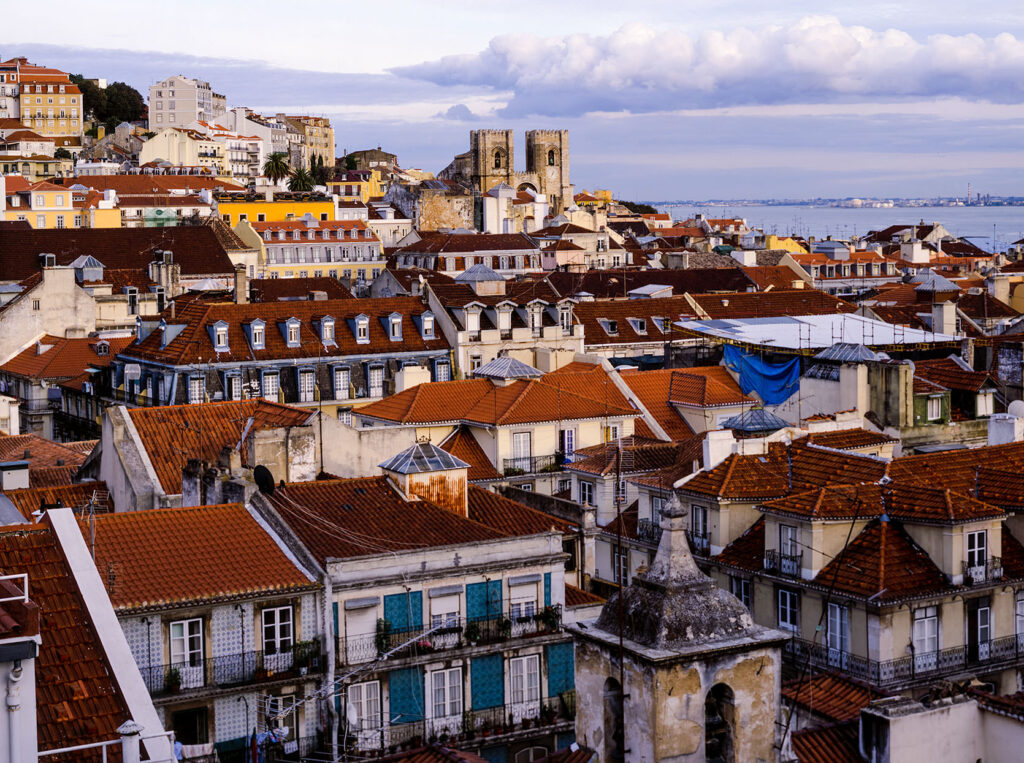
Perched atop Lisbon’s highest hill, the Castle of São Jorge is not only a significant historical site but also provides some of the best views over the city. Dating back to the medieval period, the castle has been both a fortification and a royal palace. Today, it stands as a monument to the Age of Discoveries when Lisbon was the center of a global empire. Inside, you can explore ancient ruins, wander through old battlements, and visit the museum that showcases archaeological finds from the site. The castle is easily accessible via public transport or by taking a leisurely hike up the hill, which offers its own panoramic rewards.
Just downhill from the castle, Alfama, Lisbon’s oldest neighborhood, spreads out with its maze of narrow streets and historic buildings. This area survived the great earthquake of 1755, preserving its original layout and many of its ancient structures. Walking through Alfama is like stepping back in time; it’s an area that maintains its traditional Fado houses, colorful tile-covered buildings, and small, winding alleyways. While here, visit the Fado Museum, enjoy a coffee at one of the quaint local cafes, or simply soak in the atmosphere of this unique district.
Both the castle and Alfama are located centrally and are well connected by Lisbon’s public transport network. You can take the Tram 28 which stops nearby, or walk from the downtown area which is a delightful way to see more of the city.
Visit the neighborhood of Belem
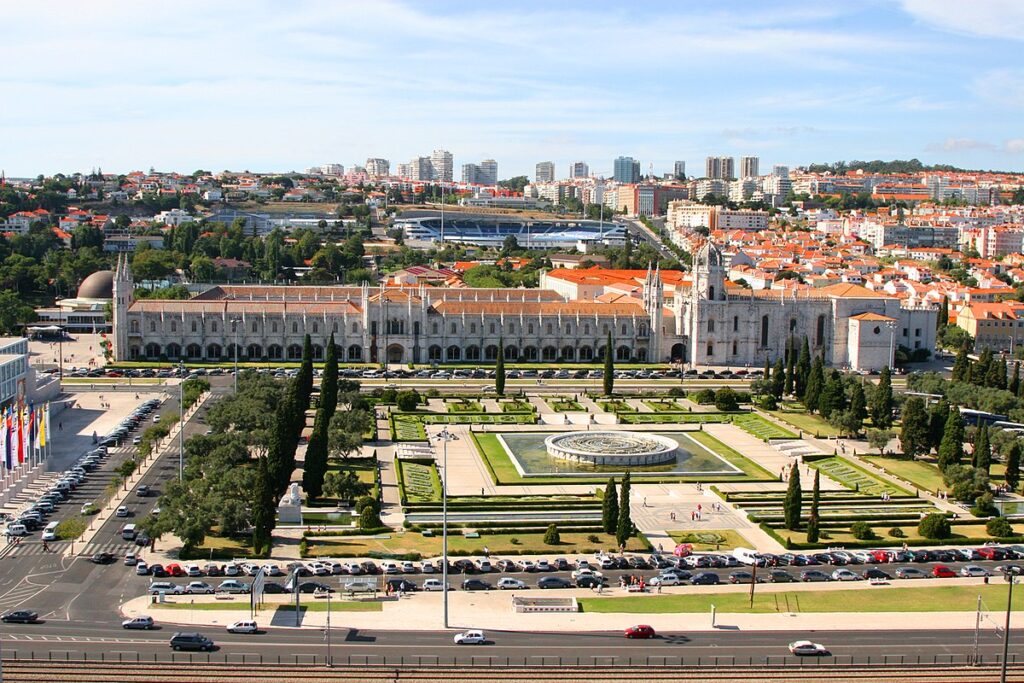
Belém is where Portugal’s great explorers embarked on their voyages, discovering sea routes to India, Africa, and Brazil. This rich maritime history is celebrated throughout the neighborhood, most notably at the UNESCO World Heritage sites of the Belém Tower and the Jerónimos Monastery. The tower, a charming 16th-century fortification, was built to defend Lisbon and guide explorers home. Nearby, the Jerónimos Monastery stands as a stunning example of Manueline architecture, offering insight into Portugal’s Age of Discoveries.
Beyond its historical landmarks, Belém is also home to several of Lisbon’s most important cultural institutions. The Berardo Collection Museum showcases modern and contemporary art, while the MAAT (Museum of Art, Architecture, and Technology) impresses with its cutting-edge design and exhibitions. Additionally, the Maritime Museum and the National Coach Museum provide fascinating glimpses into Portugal’s naval and royal histories.
No visit to Belém would be complete without tasting the famous ‘Pastéis de Belém’ – a delicious custard tart that originated here in the 19th century. These tarts are best enjoyed fresh from the oven, sprinkled with cinnamon and powdered sugar.
Belém is easily accessible from Lisbon’s city center by tram, bus, or train, making it a convenient half-day trip. You can take tram 15 or bus 728 from Praça do Comércio directly to Belém, with the journey taking approximately 20 minutes.
Visit Sintra
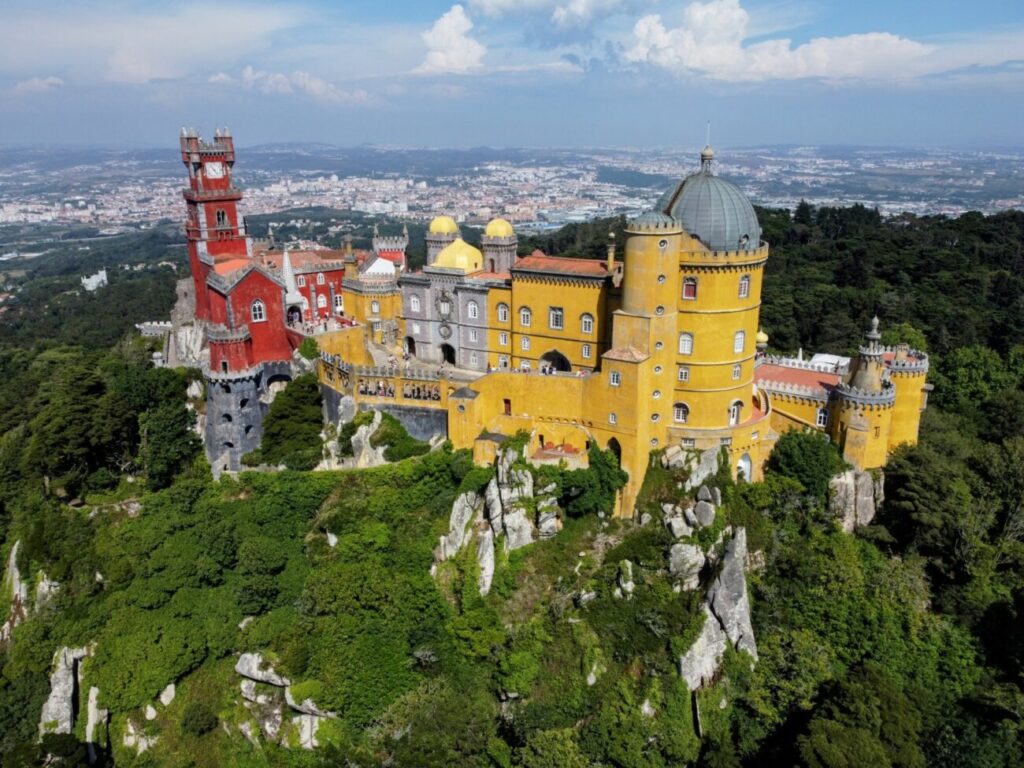
Nestled in the foothills of Portugal’s Sintra Mountains, this town is renowned for its 19th-century Romantic architectural monuments, lush landscapes, and a cool, misty climate that provides a refreshing escape from Lisbon’s metropolitan buzz.
Sintra is easily accessible from Lisbon and nearby Cascais, making it ideal for a short visit. From Lisbon, you can take a direct train from the Rossio Station, which takes approximately 40 minutes. The trains are frequent, usually running every 15 to 20 minutes. If you’re coming from Cascais, you’ll find a direct bus route that offers scenic views along the coast before heading inland to Sintra. This journey can take about 45 minutes.
Visit Cascais
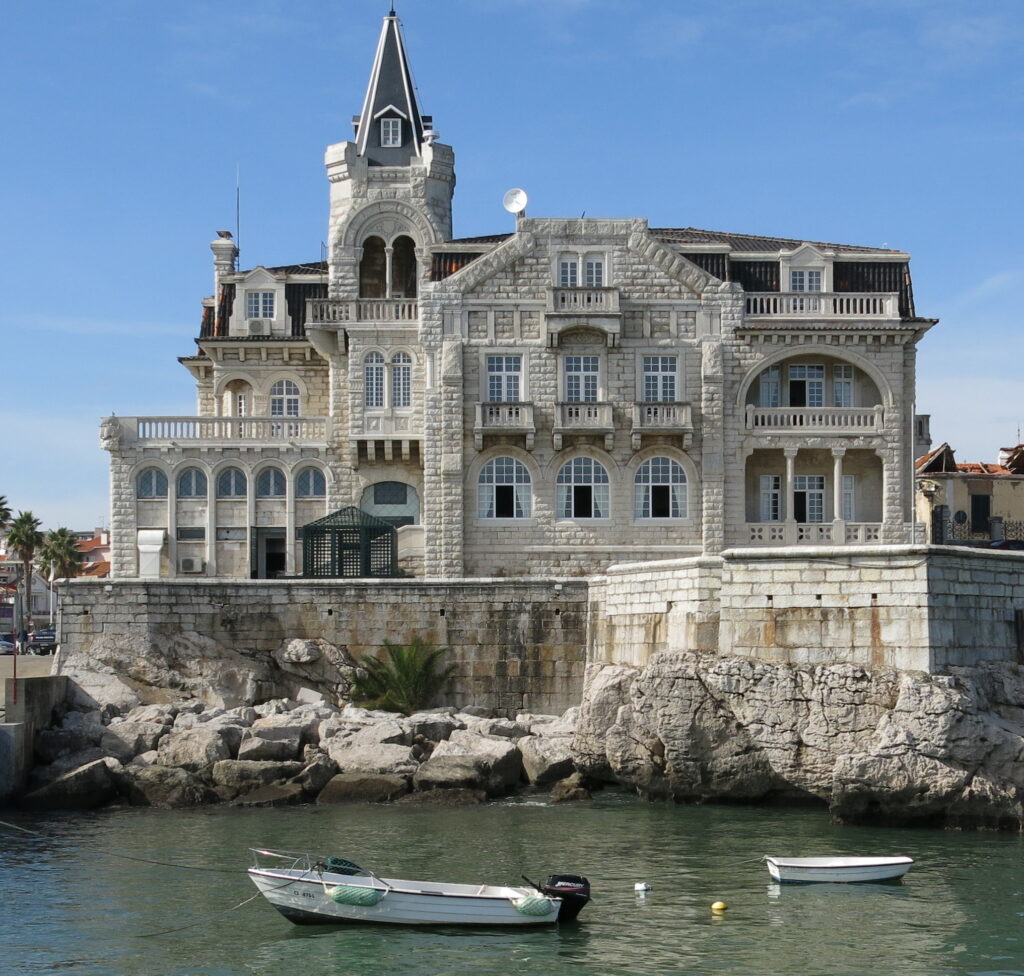
Once a quaint fishing village, Cascais has transformed into a popular seaside resort favored by both locals and tourists. Nestled on the Estoril Coast, the town offers a perfect blend of historical heritage, natural beauty, and modern amenities. Stroll along the palm-fringed promenades, explore the historic old town with its cobbled streets and quaint architecture, or relax on one of the sandy beaches.
Cascais is also home to a variety of cultural attractions, including the Paula Rego House of Stories, a museum dedicated to the Portuguese painter known for her story-like paintings. The Santa Marta Lighthouse and the Museum Conde Castro Guimarães are also must-visits, offering insights into the region’s maritime history and local aristocracy.
Getting from Lisbon to Cascais is straightforward and scenic. The most convenient way is by train, which takes about 40 minutes from Cais do Sodré station in central Lisbon. Trains run frequently, providing stunning views along the coast.